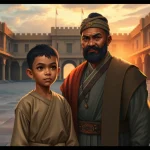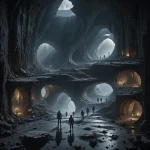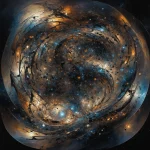AI Storyboarding: AI Storyboard generator
 The world of filmmaking is undergoing a dramatic transformation, and at the heart of this shift is the rise of Artificial Intelligence (AI). While AI has been making its mark in various aspects of film production, its impact on pre-production, particularly storyboarding, has been nothing short of revolutionary.
The world of filmmaking is undergoing a dramatic transformation, and at the heart of this shift is the rise of Artificial Intelligence (AI). While AI has been making its mark in various aspects of film production, its impact on pre-production, particularly storyboarding, has been nothing short of revolutionary.
Storyboarding, the process of visually outlining a film’s narrative through a series of panels, is a crucial step in pre-production. It helps filmmakers visualize scenes, plan camera angles, and refine the flow of the story. Traditionally, storyboarding was a time-consuming and labor-intensive process, often requiring the skills of specialized storyboard artists. However, with the advent of AI-powered storyboarding tools, this process is becoming faster, more accessible, and more efficient than ever before.
How AI is Transforming Storyboarding
AI-powered storyboarding tools leverage advanced algorithms to generate visual representations of scenes based on textual descriptions or script inputs. These tools can:
-
Generate Images: AI algorithms can create images based on text prompts, allowing filmmakers to quickly visualize scenes and characters.
-
Auto-Generate Storyboards: Some tools can automatically generate entire storyboards from scripts, saving filmmakers significant time and effort.
-
Enhance Existing Storyboards: AI can be used to refine existing storyboards by suggesting alternative camera angles, improving composition, or adding visual details.
-
Create Animatics: Some AI tools can even generate animatics, which are rough animated versions of the film, providing a more dynamic and realistic preview of the final product.
Benefits of AI Storyboarding
The use of AI in storyboarding offers numerous benefits for filmmakers, including:
-
Increased Efficiency: AI tools can automate many aspects of the storyboarding process, allowing filmmakers to create storyboards faster than ever before.
-
Reduced Costs: By automating tasks that would otherwise require the time and skills of storyboard artists, AI can help reduce production costs.
-
Improved Collaboration: AI-powered storyboarding tools can facilitate collaboration between filmmakers and other creative professionals by providing a shared platform for visualizing ideas.
-
Enhanced Creativity: AI can help filmmakers explore new ideas and possibilities by suggesting alternative visuals and perspectives.
-
Accessibility: AI tools make storyboarding more accessible to filmmakers of all skill levels and budgets.
Popular AI Storyboarding Tools
Several AI-powered storyboarding tools are available on the market, each offering unique features and benefits:
-
StoryboardHero: This AI-powered storyboard generator allows users to create storyboards from scripts, text prompts, or images. It offers a wide range of templates and customizable features.
-
Krock.io: Krock.io provides a user-friendly interface for creating storyboards. Its AI algorithms generate visuals from text descriptions, and the tool offers features for organizing and exporting storyboards.
-
Boords: Boords is a comprehensive storyboarding platform that integrates AI features for generating visuals and creating animatics. It offers a wide range of templates, tools, and collaboration features.
-
Storyboarder.ai: Storyboarder.ai is a cloud-based tool that uses AI to automate storyboarding from scripts or text descriptions. It features a user-friendly interface and offers different plan options for different needs.
-
Canva: While primarily known for graphic design, Canva also offers a storyboard creation tool with AI-powered features for generating images and creating visual narratives.
The Future of AI in Storyboarding
The use of AI in storyboarding is still in its early stages, but it’s clear that AI will play an increasingly significant role in pre-production in the future. As AI technology continues to advance, we can expect:
-
More Sophisticated AI Algorithms: AI algorithms will become more powerful and sophisticated, capable of generating even more realistic and detailed visuals.
-
Integration with Other Production Tools: AI storyboarding tools will become more integrated with other production software, creating a seamless workflow for filmmakers.
-
Personalized AI Assistants: AI-powered storyboarding assistants will be able to learn and adapt to individual filmmaker preferences, offering personalized suggestions and insights.
The Human Element Remains Crucial
Despite the growing role of AI in storyboarding, it’s important to remember that the human element remains crucial. AI tools are powerful, but they are not a replacement for the creativity, vision, and artistic sensibility of human filmmakers.
AI can be a valuable tool for generating ideas and streamlining the storyboarding process, but it is up to human filmmakers to guide the creative direction, interpret the AI-generated visuals, and bring their unique vision to life.
Conclusion
AI storyboarding tools are revolutionizing pre-production by making the process faster, more efficient, and more accessible than ever before. These tools offer numerous benefits for filmmakers, from increased efficiency to enhanced creativity. While AI is a powerful tool, it’s important to remember that the human element remains crucial in the creative process. By embracing AI while harnessing their own artistic vision, filmmakers can leverage the power of technology to create compelling and innovative films.






